5. Planet of the Apes
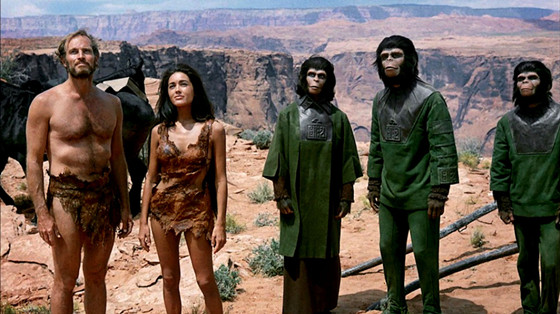
It was the mastermind behind “The Twilight Zone,” Rod Serling, who drafted the screen version of Pierre Boulle´s novel “Le Plánete des singes.” Thus, he was the responsible for writing one of the most arresting twist endings in movie history.
The story is set in the year 1973. An astronaut crew led by Colonel George Taylor (Charlton Heston) crash-lands on a remote planet after being in hypersleep for 2000 years in a space expedition.
Once out of the ship, the remaining crew members eventually stumble upon a society in which apes have evolved into highly intelligent human-like creatures. They think. They talk. They even have their own social hierarchy. In this world, the apes have assumed the role of the dominant species, while humans are disdained “animals,” unthinking and unreasoning.
Despite it has been more than 50 years since this sci-fi gem 1968 wide release, the “Planet of the Apes” closing scene still amazes those younger audiences who still don’t know what it’s about.
In the Movie: Astronaut George Taylor comes upon half-sunken wreckage of the Statue of Liberty, realizing that he has been on Earth all along and had never traveled to another planet. At the same time, ape leader Dr. Zaius (Maurice Evans) destroys the rest of the evidence that proves human race once dominated the world.
In the Book: The main character – journalist Ulysse Merou – escapes from the ape planet and lands back on Earth. However, he is shocked to discover that more than 700 years have passed since he originally departed, and that Earth is now also ruled by intelligent apes that have risen to dominance.
4. World War Z
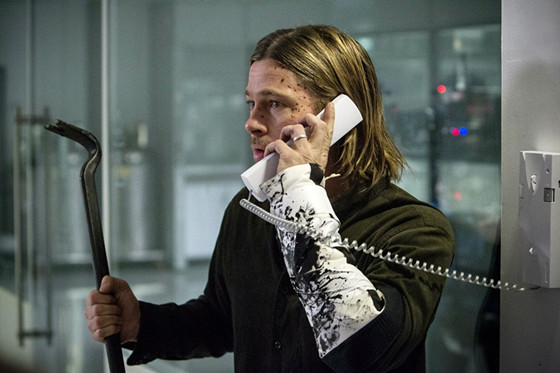
“That’s pretty all much it has,” Max Brooks stated in 2012, indicating that the title is the only resemblance the Brad Pitt’s film has with his book. Unfortunately, this was no exaggeration. The apocalyptic action horror film “World War Z,” directed by Marc Foster, couldn’t have missed the literary adaptation mark more.
In the Movie: The story focuses on Pitt’s character (named Gerry Lane), a former United Nations investigator who is recruited by the U.S. government to go on a global hunt for a possible cure to the unrelenting virus that is spreading through the world and mutating human beings into ghastly zombie creatures. He reluctantly accepts this task in exchange for his family to be able to shelter in a U.S. Navy vessel.
Later on, during Gerry’s journey through Jerusalem, he learns that the infected do not attack the injured or terminally ill. Based upon this fact, a vaccine derived from a dangerous pathogen is developed, which acts as a kind of camouflage and allows survivors to battle the infected.
In the Book: The book is a fascinating yet unnerving study of the global human response to the absolute catastrophe. But most important, “World War Z” is not actually about zombies. It is about the collapse of civilization, which happens to come from a zombie pandemic.
The novel is set 10 years after the official end of the zombie war. And it reunites a collection of hypnotic first-person remembrances from people of various nationalities at all levels of social, economic, and political classes, accounting how they coped with the worldwide outbreak that nearly drove humanity to its extinction. All these vignettes are chronicled by an agent of the United Nations only known as “the interviewer.”
3. Forrest Gump
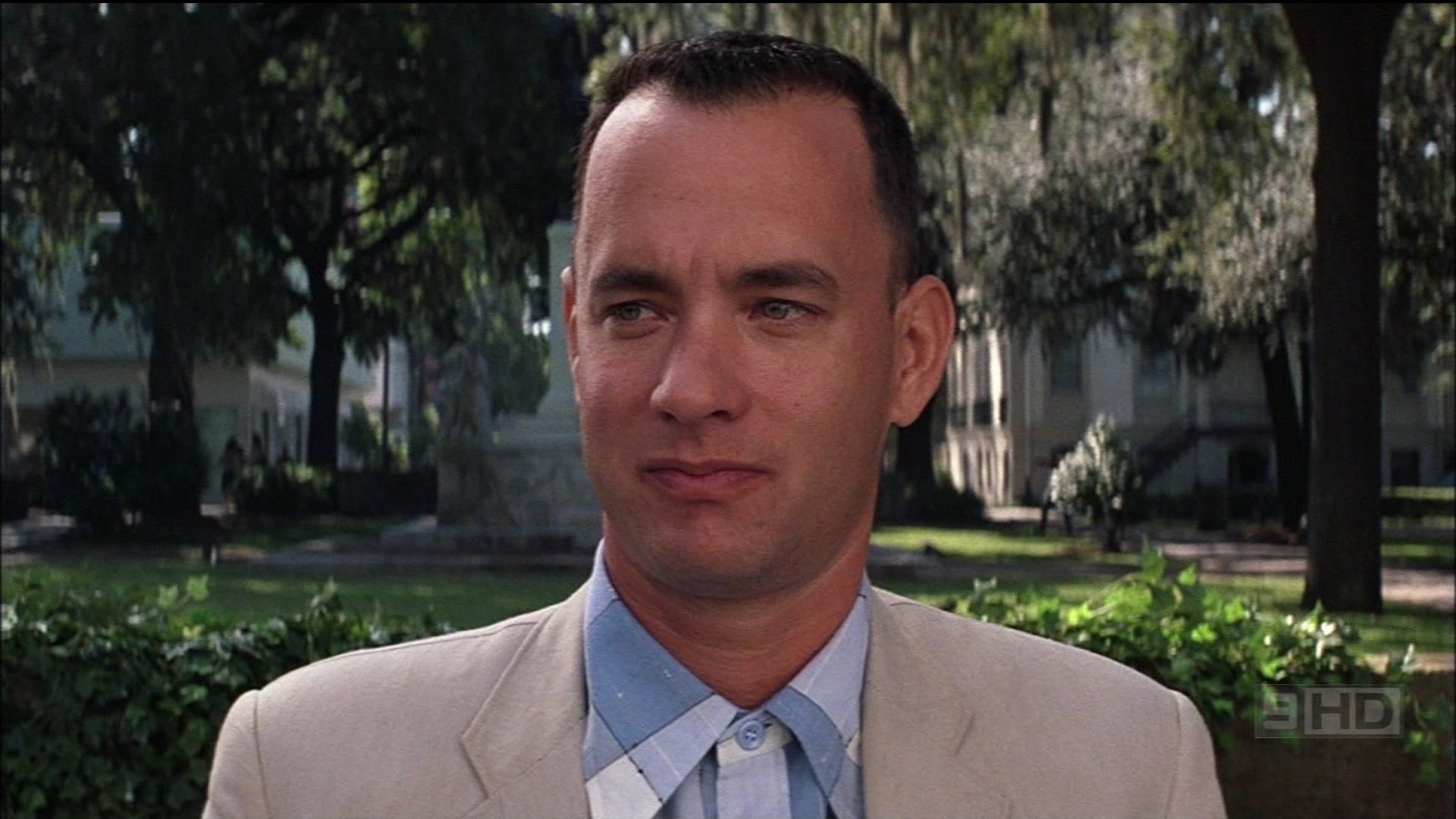
“Life is like a box of chocolate, you never know what you’re going to get.”
We all may be already familiar with the modern fairy tale about a mentally challenged man named Forrest Gump, who inspires audiences by accomplishing amazing feats that someone with his disability should never be able to do.
With only an IQ of 75, Forrest finds fame and fortune without even asking for it. He accidentally ends up in meeting Elvis Presley and JFK; saves lives in the Vietnam War; exposes the Watergate scandal; makes the cover of Forbes magazine; inspires John Lennon’s iconic record “Imagine”; literally runs across the entire country in seek of therapeutic relief; and becomes a successful shrimping boat captain. And yet, despite all these striking events, he continues to portray the definition of a good friend and a kind-hearted human being.
Although Forrest takes part in several historical events in both the movie and the book, a fine number of these were altered or cancelled out. Forrest’s run across the United States does not happen in the novel, nor does he marry Jenny or even graduate college.
The book also describes Forrest’s period as an astronaut, a professional wrestler, a chess prodigy, and an actor. He also spent four years living with a cannibalistic tribe in New Guinea; saved the life of Chairman Mao Zedong during a trip to China; and went to outer space with an orangutan named Sue (don’t ask).
Furthermore, director Robert Zemeckis also took the risk of changing the final course of Forrest’s relationship with Jenny, his childhood sweetheart.
In the Movie: Forrest reunites with Jenny after receiving a letter asking him to visit her. She then introduces him to his own son, named Forrest Gump Jr. (conceived during a brief encounter years ago), and tells him she is utterly sick with an unknown virus, which we assume is probably HIV/AIDS. They eventually marry, but Jenny ends up dying a year later. In the last scene, Forrest and his son await the school bus on Forrest Jr.’s first day of school.
In the Book: Jenny and Forrest maintain an on-off sexual relationship throughout the book. But she ultimately decides to live far away from him and marries another man, despite being impregnated with Forrest’s child. Also, she doesn’t die the way she did in the movie.
2. Hannibal
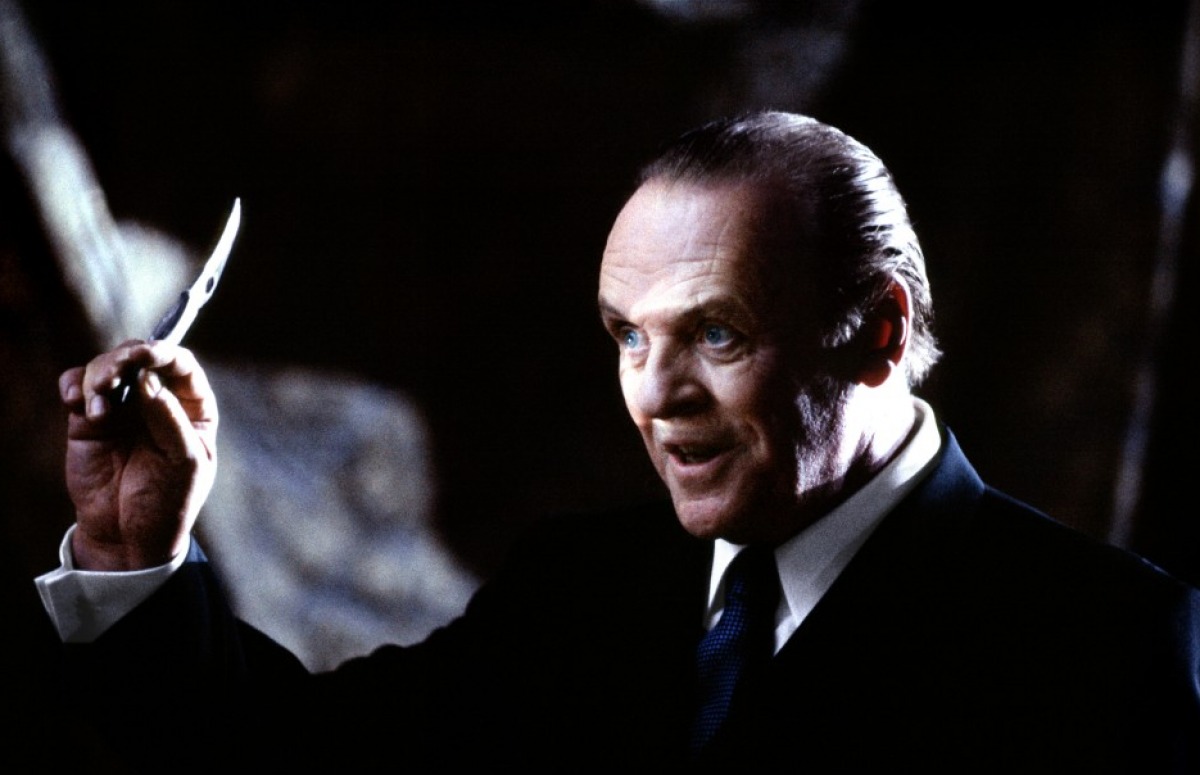
“Hannibal” continues the story begun in the Oscar-winning film “The Silence of the Lambs,” adapted from the Thomas Harris book trilogy. Ten years have passed since FBI agent Clarice Starling (Jodie Foster then, Julianne Moore now) interviewed convicted mass murder cannibal Hannibal Lecter (Anthony Hopkins, reprising his best-known role).
The demented doctor is now residing in Florence, Italy, under the alias of “Dr. Fell,” where he has become one of the curators of the Palazzo Vecchio. However, his cover is broken when cop Rinaldo Pozzi plans to turn Dr. Lecter over, for money, to Mason Verger, a horribly disfigured sadistic man who is hell-bent on taking revenge on Hannibal, after the latter made him to tear off pieces of his own face with a glass shard and feed them to a dog. Clarice eventually discovers Mason’s evil plot to hunt Hannibal and will prevent him from succeeding at any cost.
In Thomas Harris’ 1999 novel, the heart of the story is the eerie and complex relationship that develops between Clarice and Hannibal. However, director Scott Ridley was not willing to portray a romance between a law officer and a psychopathic serial killer.
In the film, Hannibal and Clarice maintain a mesmerizing mentor/student relationship. Lecter is obsessed with Clarice. He finds her intriguing. But he is also aware of his condition and knows that falling in love with her is not something he can allow himself.
On the other hand, Clarice respects Lecter for his behavior towards her. She respects his intelligence. But she will always remain loyal to her job, and she will capture Hannibal and return him to his cell if she has to.
In the Movie: At the climax of the film, Clarice Starling, weakened and disoriented by morphine, tries to fight Hannibal, but he overpasses her. She eventually handcuffs herself to him in an attempt to turn him over to the authorities. Despite Lecter threatening to sever her cuffed hand to escape, he cuts off his own rather than hurting her. In the final scene, Lecter is later seen on a plane heading to somewhere in Asia, where he shares a part of a cooked brain with a curious boy.
In the Book: Despite originally resisting, Clarice eventually succumbs to her desires and willingly embarks in a relationship with Hannibal Lecter. Then, after having one of the creepiest romantic scenes ever penned, they become lovers and disappear together.
1. I Am Legend
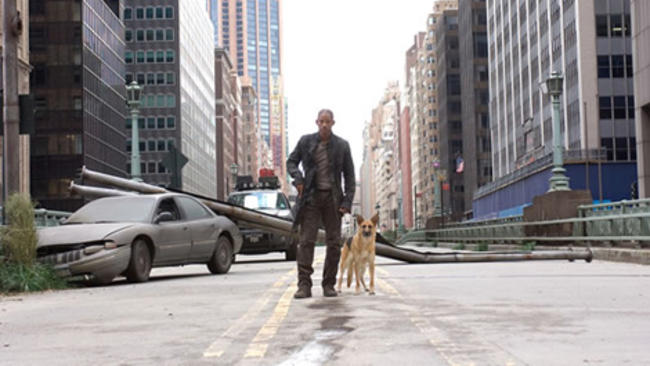
Richard Matheson’s 1954 novel “I Am Legend” has been adapted for film a total of three times: “The Last Man on Earth” (1964), “The Omega Man” (1971) and “I Am Legend” (2007). In this list, we are centering on the popular 2007 adaptation starring Will Smith.
Set in 2012, “I Am Legend” depicts the story of Dr. Robert Neville, a military virologist who appears to be last surviving human left on Earth, after a genetically modified virus that was supposed to cure cancer has wiped out and infected nearly all of Earth’s population.
The remaining humans are now flesh-eating mutated creatures (referred to as “Darkseekers”) that can only live up in the dark. For some reason, Neville is one of the small percent of humans which is immune to the virus. He keeps a routine life for his own survival with his dog Sam, and is entirely committed to researching a potential cure for the disease, in hopes of saving the human race.
Despite apparently sharing the almost identical premise, both the book and the film can be easily grasped as two completely independent stories.
In the Movie: Neville is rescued by another immune human survivor – a woman named Anna and her son Ethan – after he is nearly killed by a horde of Darkseekers. In the movie’s ending, during an attack to his lab by a horde of infected, Neville discovers that his antidote is finally working. He then takes a grenade and kills the Darkseekers at the cost of his own life, allowing the other survivors to escape to a survivor camp with the cure.
In the Book: Just like in the screen adaptation, Neville finds a surviving woman, but soon she admits to be one of the infected (which are described as actual vampires capable of thought and speech, and not unreasoning bloodsucking beasts, like in the film counterpart), who was sent to spy on him.
Soon, these creatures are revealed to have developed a medication which helps them to ward off the most severe symptoms of the disease. They are attempting to build a new society and are slowly becoming the new dominant race.
In this new world, they see Neville with the same hatred he once felt for them. Neville has become the outsider and the creature society now fears. Now, he is the monster. He is a legend. In the end, Neville finally recognizes that he is just a remnant of extinct humanity and is then executed by the vampires.